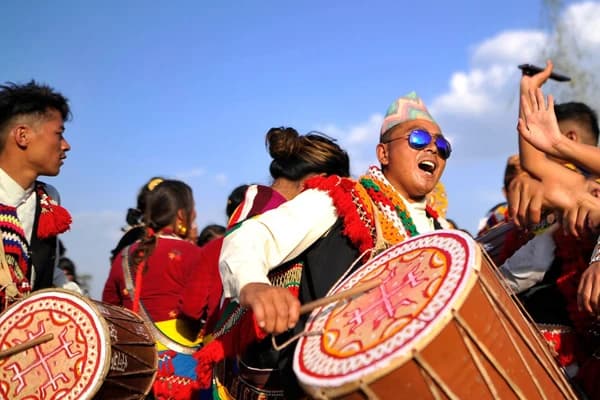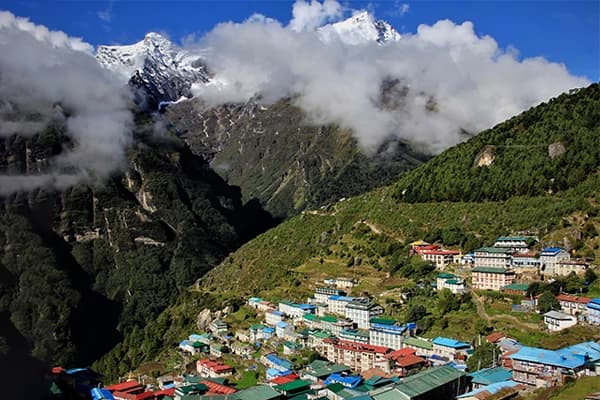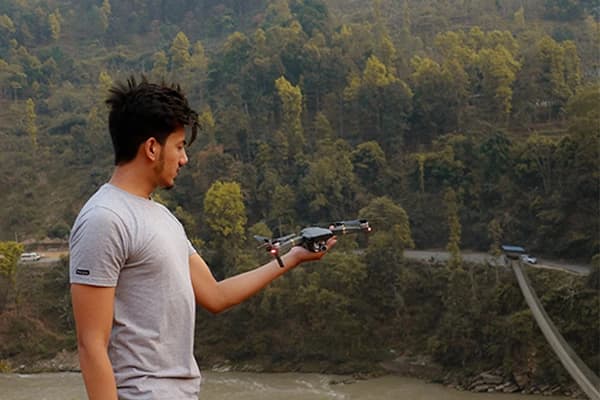History of Buddha Jayanti festival celebration
The Buddha Jayanti festival has a history of celebration of over two thousand years. Earlier, in the 3rd century BCE, Emperor Asoka was inspired by the Buddha's teachings. In his reign, the first Buddha Jayanti festival celebrations were observed.
To spread the teachings of the Buddha, he built stupas and monasteries in Nepal and across South Asia. This helped to establish the tradition of commemorating Buddha’s life on this auspicious day.
Some of the historical rituals of the Buddha Jayanti celebrations that were observed are processions, prayers, lighting of lamps, and the bathing of Buddha images.
Over the centuries, the Buddha Jayanti has evolved from a regional observance to a major festival celebrated by Buddhists worldwide.
Religious importance of Buddha Jayanti
Buddha Jayanti is the main festival of the Buddhist and is also celebrated by the non-Buddhist across the world. So, it is also seen as a religious festival in Nepal.
The Buddha Jayanti marks the three pivotal events in the Buddha’s life—his birth as Prince Siddhartha, his enlightenment under the Bodhi tree, and his final liberation from the cycle of birth and death (Parinirvana).
On this day, the Buddha's teachings, like the Four Noble Truths and the Noble Eightfold Path, are dedicated. The devotees listen to the teachings from the monks and try to implement the teachings in their thoughts and lives.
Buddhists as well as the followers of the Buddha's teachings celebrate with prayers, meditation, chanting, offerings, and acts of kindness. The devotees use this auspicious day to renew their commitment to non-violence, mindfulness, and compassion.
How is Buddha Jayanti celebrated in Nepal: Traditions and Rituals
Buddha Jayanti festival is celebrated with great joy and happiness. Below are some of the key traditions and rituals on how Buddha Jayanti is celebrated in Nepal.
On the Buddha Jayanti, devotees gather at the major Buddhist sites early in the morning for worship, ritual circumambulation of stupas, and special pujas (prayers). The major Buddhist sites include Lumbini (Buddha’s birthplace), Swayambhunath, and Boudhanath.
- Offerings at the temple and monasteries
The devotees offer butter lamps (often 108 or 1008), rice, flowers, and coins at temples and monasteries. It symbolizes the spread of Buddha’s wisdom and the impermanence of material life.
- Monastery and Stupa Decorations
On this day, several temples, monasteries, and homes are adorned with colorful prayer flags, flowers, and lights. This tradition is followed because it creates a festive and spiritual atmosphere.
- Processions and Cultural Events
In most of the places, processions along with the cultural events are organized to celebrate the day. The processions feature thangkas (Buddhist paintings), statues, and Buddhist flags. The march-past goes through the cities and towns.
The processions culminate in the cultural event. You also can join the event and enjoy it. The event features cultural music and dances. Monks and devotees chant mantras and recite the Buddhist scriptures.
Some organizations or people engage in giving food to the needy and donate the food or the clothes to the monasteries and participate in the community services. It is one of the Buddha's teachings and inspirations.
- Special Ceremonies in Lumbini
Above all the celebrations in the world, the Maya Devi Temple in Lumbini hosts the main celebration, with devotees offering prayers at the exact spot believed to be Buddha’s birthplace. The event is one of the dreams of the many Buddhists as well as followers of Buddha’s teachings.
Celebrations of Buddha Jayanti 2025 in Nepal
The celebrations of the Buddha Jayanti festival in Nepal can be observed in the following places.
1. Lumbini
Lumbini is the prime place to witness the Buddha Jayanti celebration. During the festival, thousands of the devotees from Nepal and around the world gather to pay homage to Buddha and participate in a series of cultural and religious events.
The key features of the celebrations that you can expect in the Buddha Jayanti Celebrations in Lumbini (2025) are
- Grand procession through the sacred Lumbini area
- Cultural performances such as plays depicting Buddha’s life, music, and dance
- Chanting of Buddhist hymns and prayers.
- Lighting butter lamps and incense offerings.
- Ceremonial bathing of Buddha statues, symbolizing purification.
Releasing captive animals, such as birds, to promote compassion.
2. Kathmandu Valley
The Kathmandu Valley also hosts the grand celebrations of the Buddha Jayanti. Devotees gather at major Buddhist shrines and monasteries like Swayambhunath (Monkey Temple) and Boudhanath Stupa.
People walk around the stupas in ritual circumambulation, offering butter lamps, flowers, rice, and coins. You can also take part in the special prayer ceremonies, chanting, and meditation sessions held throughout the day in the stupa premises.
The air around these sites is filled with the scent of incense and the sound of chanting. On this special day, several monasteries are decorated.
3. Nationwide Practices
Nationwide, the devotees visit the temples and monasteries on Buddha Jayanti. They offer the prayers, chant the Buddhist scriptures, and meditate. The special sermons and discourses on Buddha teachings are also held in the monasteries.
Especially on the Buddha Jayanti, the monasteries and temples are decorated with the colorful prayer flags and flowers. The atmosphere is filled with processions, group meditation, lectures on Buddhist scriptures, and acts of charity.
The key rituals, like chanting, lighting butter lamps, and offering flowers, rice, and coins, are practiced in all the spiritual places of Nepal. Various religious and cultural programs are organized.
A public holiday is declared on the occasion of the Buddha Jayanti 2025. Both Hindus and Buddhists equally join in the festivities.
Global Observance of the festival celebration
The Buddha Jayanti 2082 is going to be celebrated in all Buddhist-living nations across South, Southeast, and East Asia, including Nepal, India, Sri Lanka, Thailand, Myanmar, Japan, and China.
The celebration styles may be different, but the core values and rituals remain the same in most of the countries. The common practices include visiting Buddhist temples and shrines, engaging in community service and charitable acts, and participating in cultural programs and events.
- In India, devotees visit temples, participate in prayers, and perform acts of charity.
- In Sri Lanka, people decorate homes with lanterns, the streets are decorated with elaborate illuminated paths, free food stalls are set up everywhere, and so on.
- In Bhutan, you can observe the traditional masked dances and music performances held in temples.
- In South Korea, thousands of lotus-shaped lanterns illuminate temples and city streets on the Buddha Jayanti 2082 festival day.
- In Malaysia, caged animals are released as an act for generating good karma.
While there are celebrations across the world, Lumbini remains the global hub. It is also because the place is the birthplace of Gautam Buddha. Pilgrims and tourists come from all around the world for ceremonies, peace walks, and meditation sessions.
You can also see the use of technologies in celebrations across the Buddha Jayanti. The virtual gatherings, live-stream ceremonies, and online meditation sessions have made festival celebrations easy and accessible. These transformations have made it easy to connect with fellow mates around the world.
Conclusion
The Buddha Jayanti festival 2025 is not just a festive occasion but also a profound reminder of the timeless teaching and enduring legacy of the Lord Buddha. On this day, we remember the birth, enlightenment, and Parinirvana (final liberation) of Siddhartha Gautama, the Buddha, with all our heart and soul. Buddha Jayanti also serves as an opportunity for reflection, renewal, and commitment to his path.





